
NATO, the North Atlantic Treaty Organization, is a mutual-defense pact between 32 countries of Europe and North America. It was created to counter the threat of attack by the Soviet Union, and now Russia. The idea that Russia would ever be allowed to join NATO, or would even want to, seems ludicrous. But let’s consider scenarios where that might be possible, and what the results could be. Doing so can help us see the value of both deterrence and engagement with Russia for long-term global peace and stability.
24/7 Wall St. Insights
- NATO was founded in 1949 for the collective self-defense of the Western allied countries against Soviet expansionism.
- For Russia to join, it would have to experience a political and social transformation that would make it fully cooperative and non-threatening to the alliance—an unlikely scenario.
- If somehow Russia did join NATO the new balance of power would transform the world.
What Is NATO?

NATO is a collective security agreement between 32 countries. 30 of them are in Europe and the other two are in North America (the U.S. and Canada). The terms of the treaty specify that an attack on one member of the alliance will be treated as an attack on all of them. An example of when this was activated was when European and Canadian military aircraft patrolled American skies after 9-11.
What Led to the Formation of NATO?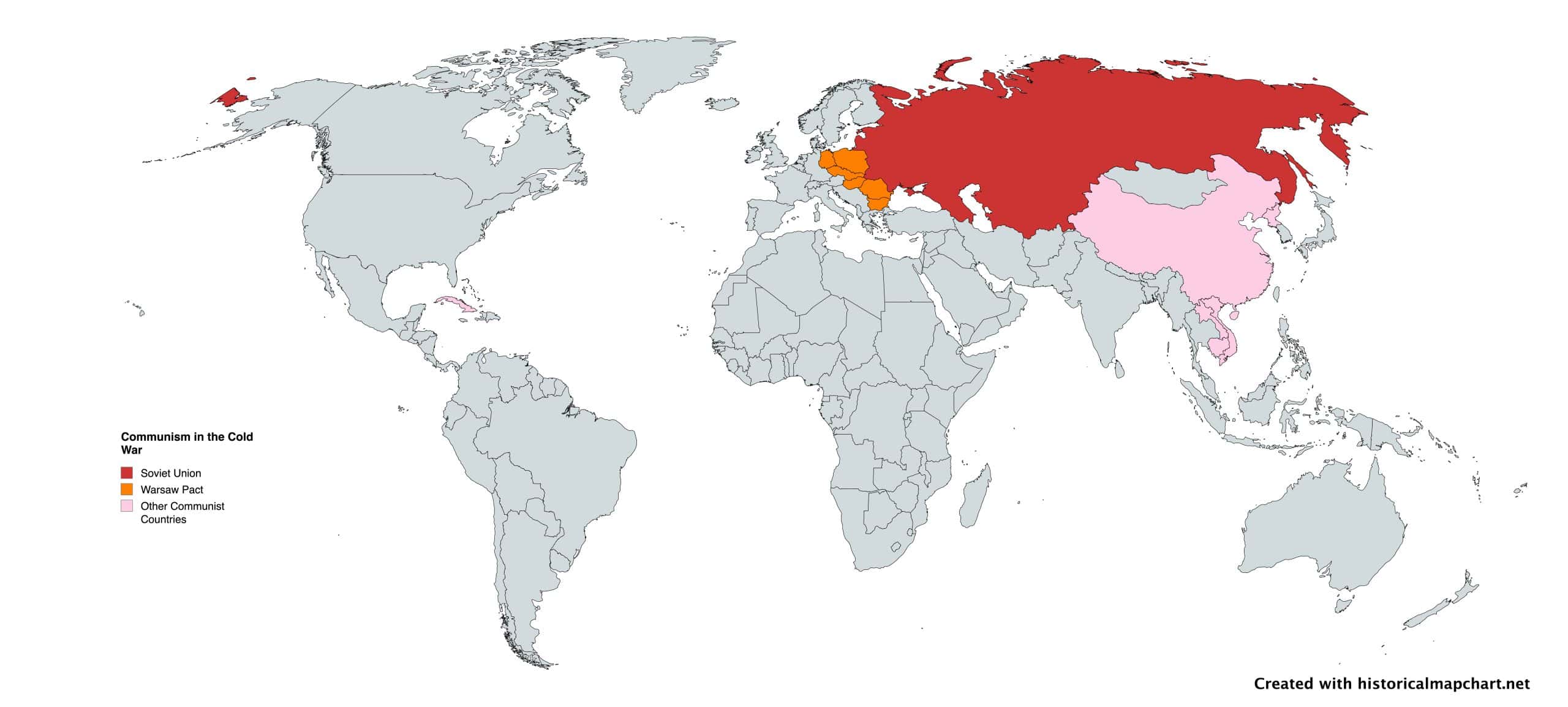

NATO formed in 1949 out of fear of the Soviet Union (in which Russia was the dominant Republic). The Soviets were communist, with an ideology diametrically opposed to Western values and strategic interests globally. However, the US, UK and their allies cooperated with them to defeat the greater threat of Nazi Germany. After the war, the Russians refused to demobilize from the countries they occupied in Eastern Europe and instead installed communist governments in them. NATO was intended to stop further Russian expansion on the continent. The Soviet Union responded by forming the Warsaw Pact alliance with its East European partners.
What Countries Founded NATO?

On April 4, 1949, representatives of 12 countries signed the North Atlantic Treaty in Washington D.C. These were: Belgium, Canada, Denmark, France, Iceland, Italy, Luxembourg, the Netherlands, Norway, Portugal, the United Kingdom and the United States.
What Are the Requirements to Join the Alliance?
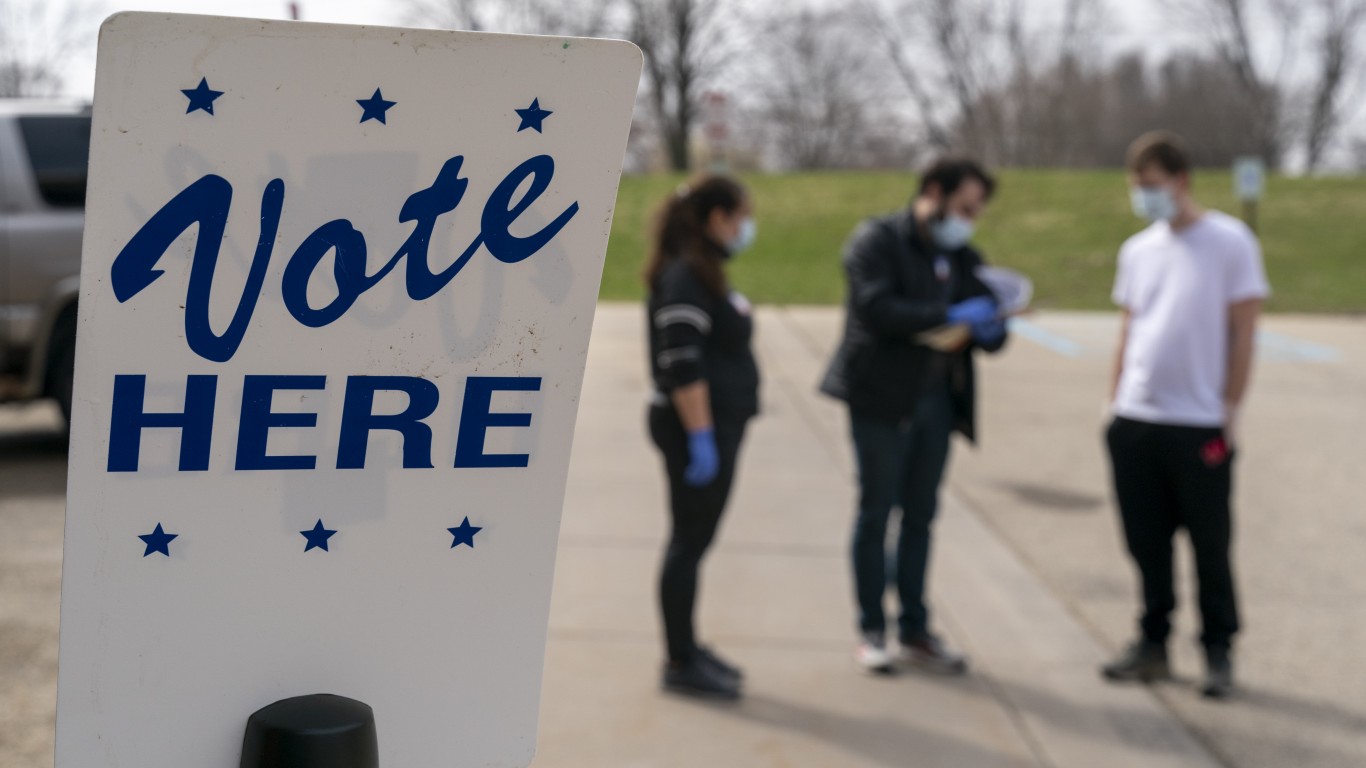
For additional countries to join NATO, they must meet these criteria:
- Be a European state
- Have a democratic political system and a free market economy.
- Protect minorities
- Commit to resolving conflicts peacefully.
- Be able and willing to participate in NATO military operations.
- Have democratic civil-military institutions.
When Did NATO Expand?
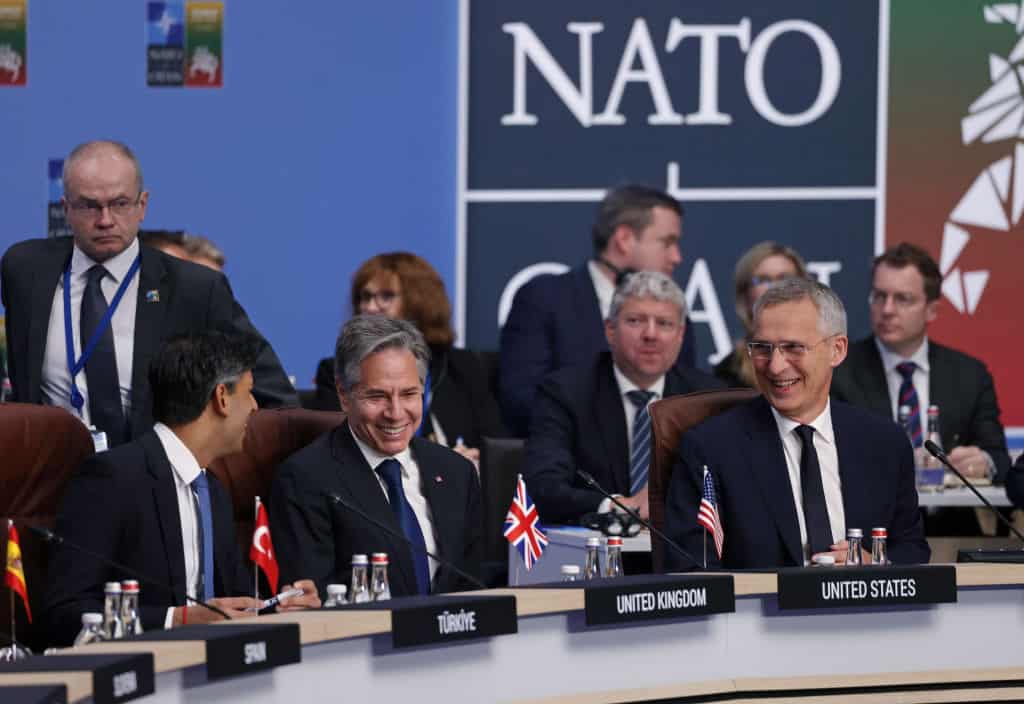
The alliance went through 10 waves of expansion:
- 1952 – Greece and Türkiye
- 1955 – West Germany
- 1982 – Spain
- 1999 – Czechia, Hungary, and Poland
- 2004 –Bulgaria, Estonia, Latvia, Lithuania, Romania, Slovakia and Slovenia
- 2009 – Albania and Croatia
- 2017 – Montenegro
- 2020 – North Macedonia
- 2023 – Finland
- 2024 – Sweden
What Countries Want to Join?
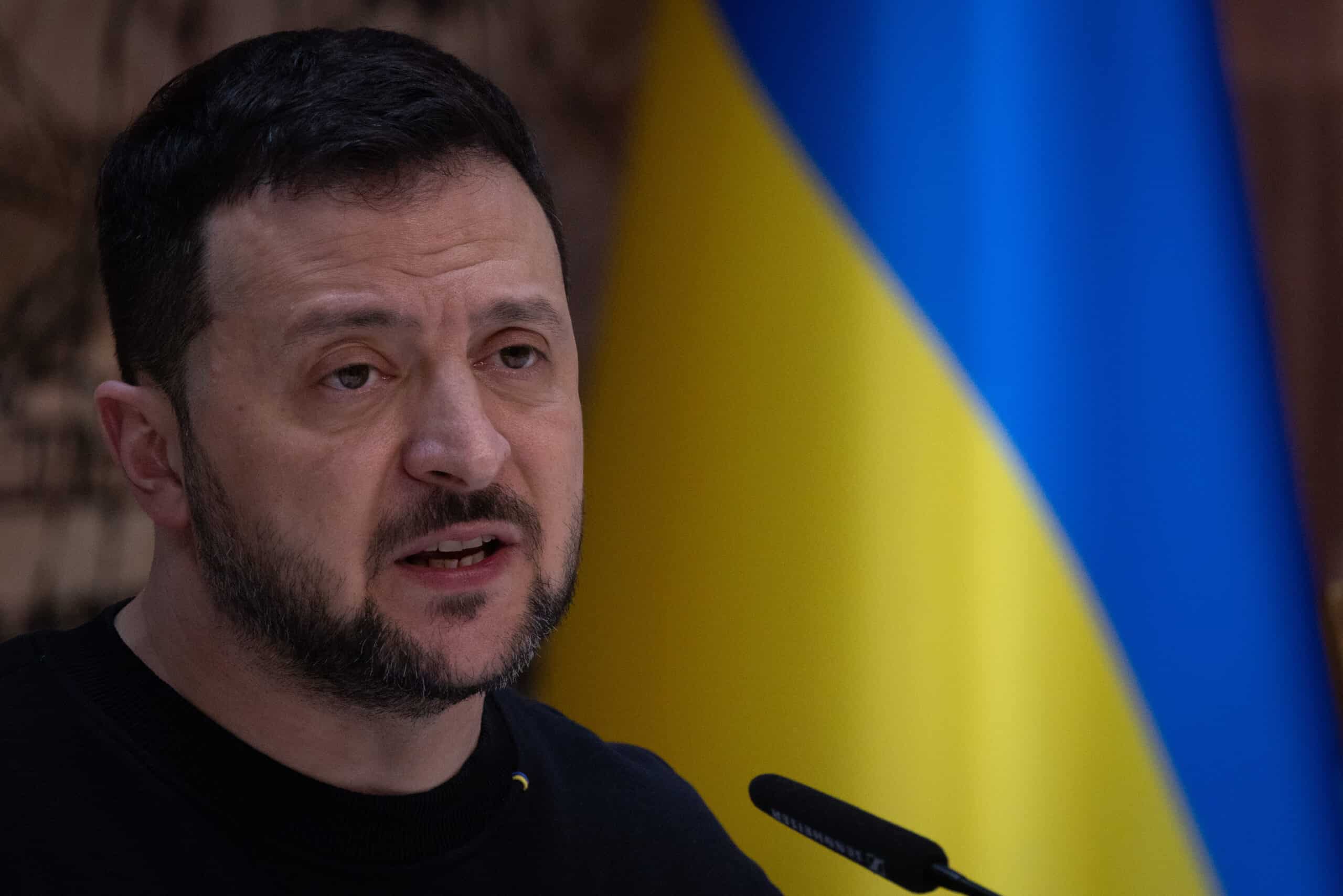
Ukraine, Georgia, and Bosnia and Herzegovina have all applied to join NATO and the alliance has indicated an intention to add them in the future. Kosovo would also like to join but is not as far along in the process. There is some debate about whether or not to join in other European countries, like Austria, Cyprus, Ireland, Malta, Moldova, and Serbia.
Why Might Russia Want to Join?

Historically, the Russians go through periods of decline and they fall behind technologically and militarily. A losing war or social unrest reveals their weakness and they make peace with the West to gain access to technology and financial assistance. Once they have built up their strength, they swing back in the opposite direction, becoming more nationalistic and anti-western out of concern over growing Western influence.
Given that pattern, next are several scenarios in which Russia might want to join NATO.
Scenario 1: A Mutual Threat
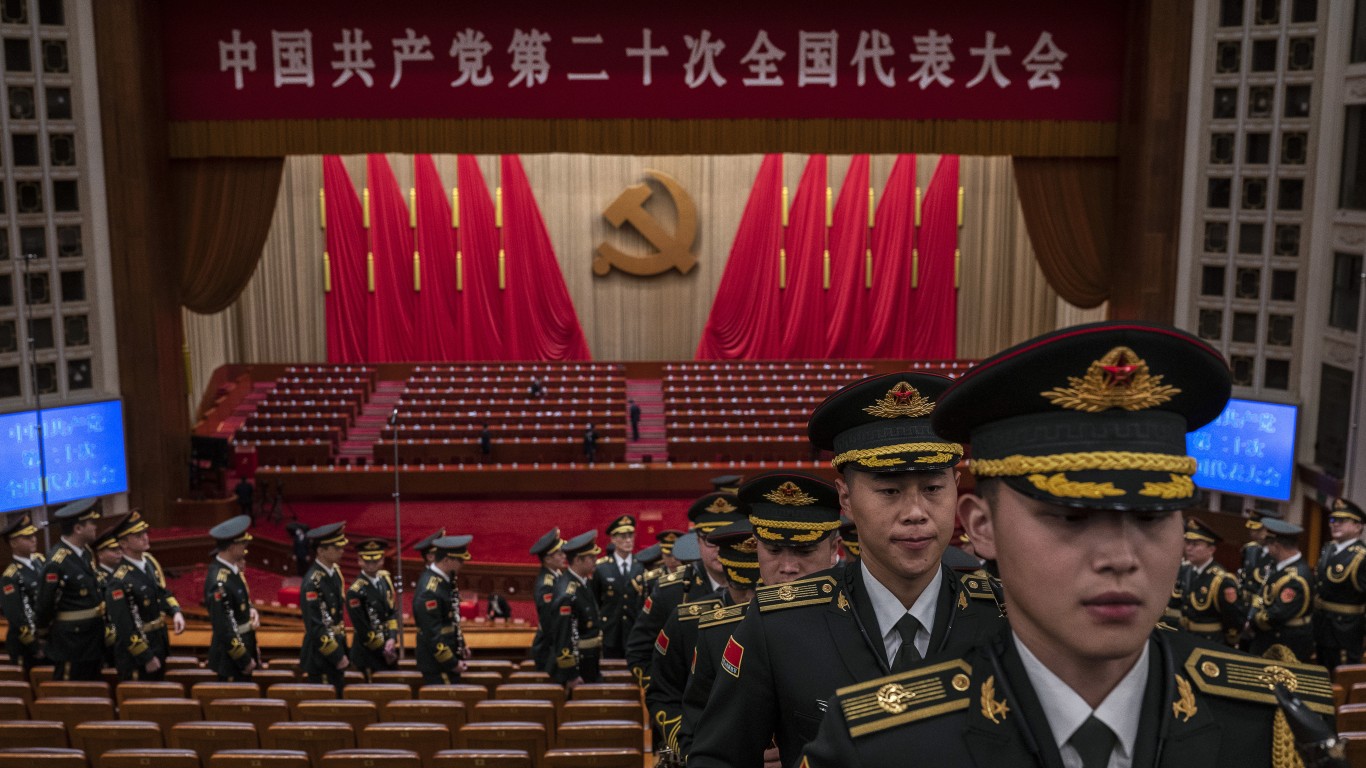
What kind of mutual threat could cause Russia to seek the protection of NATO membership? In the long run, China is the most obvious problem. Russia is already drifting into a sort of colonial relationship as a supplier of raw materials to China and an importer of manufactured goods and high technology. China has recently published maps showing regions of Russia it ceded in the 19th century under their old Chinese names. If Russia comes to see China as a greater threat than NATO, it might seek assistance or even membership if that were possible.
Scenario 2: Russian Collapse

Let’s say the war in Ukraine bleeds Russia dry and the country starts racking up defeat after defeat. As a last resort, Putin orders the use of tactical nuclear weapons. NATO responds to this with an overwhelming conventional bombardment of Russian forces in Ukraine and sinks the Black Sea fleet. Russia backs down rather than escalating to a planet-ending nuclear war.
In the past, military defeats, as in the Russo-Japanese War, have been catalysts for major policy changes and even revolution. In this scenario, defeat could cause massive social unrest, loss of control by the central government, and the breakup of the country into multiple feuding states with an inability to safeguard its nuclear arsenal.
Wealthy oligarchs who pull the strings behind the scenes might decide it is in their best interest to eliminate Putin and put a pro-Western government in place, seeking assistance in restoring order, national unity, and safeguarding the Russian nuclear arsenal, and even eventual NATO membership for ultimate security. It all depends on whether they are more interested in creating conditions to continue enjoying their lives of luxury, or are hell-bent on confronting the West no matter what the cost.
Scenario 3: Subverting NATO From Within

In light of the long-range Russian strategy of vacillating between pro- and anti-western policies just long enough to rebuild themselves, NATO would always be wary that Russia’s true motive for joining was nefarious. Not only would membership give Russia access to Western military protection, training, and technology, it would give the Russians a window into alliance strategies and internal weaknesses. Ultimately, Russia could work to undermine the alliance from within and, if and when they were kicked out or left on their own, to be a much more formidable rival.
Scenario 4: A Transformation of NATO
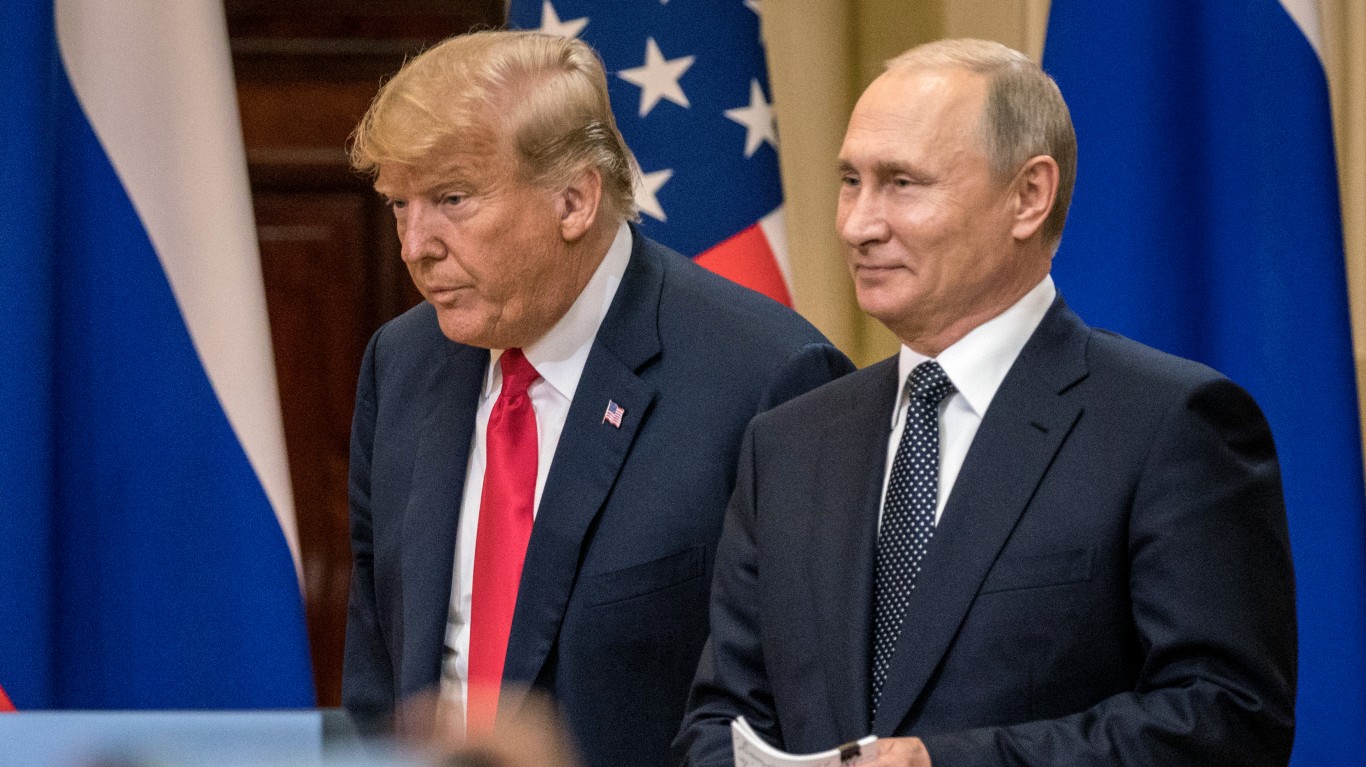
There is at least one scenario in which Russia wouldn’t need to change, but NATO would. Already there is division within the alliance over Ukraine policy, among other things. Hungary is the most pro-Russian member of the alliance. Turkey was also obstructionist over the addition of Finland and Sweden to NATO. Donald Trump has called into question the usefulness of the alliance to the United States.
If anti-NATO forces begin to come to power in member countries, the alliance could substantially weaken and change its character to avoid collapsing completely. It might, for example, focus more on peacekeeping and disaster relief roles and less on robust military defense and training exercises. A weakened and de-fanged NATO, perhaps with major countries already having withdrawn from it and Russian-sympathizing countries remaining, might even accept their former enemy as a member.
Characteristics of a Super-NATO
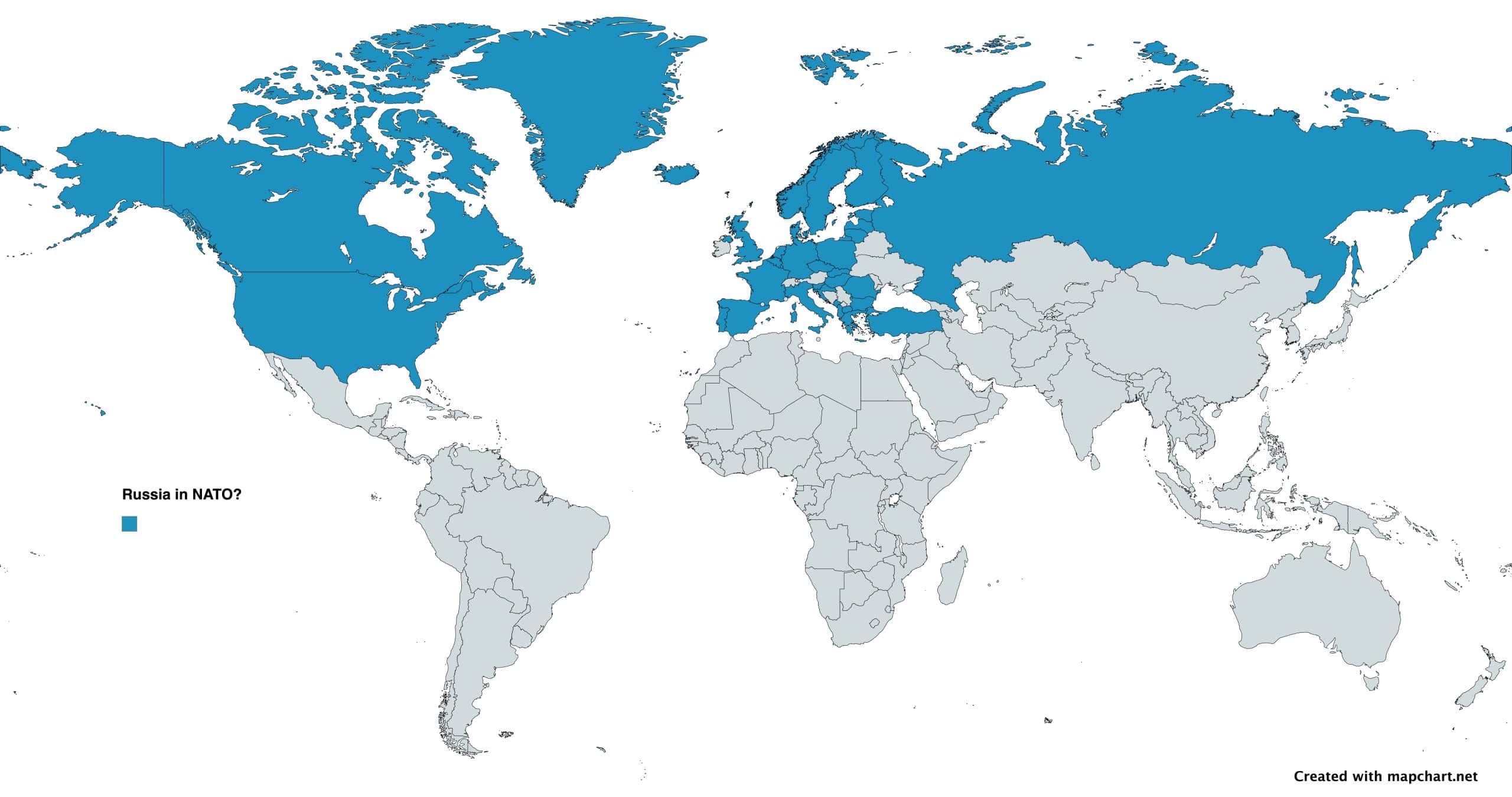
A Super-NATO that included all its current countries as well as Russia would wrap around the whole Northern Hemisphere and have these gargantuan characteristics:
- Land area:
- NATO: 9.7 million mi²
- Russia: 6.6 milion mi²
- Total: 16.3 milion mi²
- Population:
- NATO: 973 million
- Russia: 144 million
- Total: 1.1 billion
- Military personnel:
- 3.5 million
- 1.5 million
- Total: 5 million
Impact of a Super-NATO on Arms Control

Currently the United States and Russia each have about 5,600 nuclear warheads apiece. After them, China has 500 and no other nation has more than 300. If the US and Russia were allied, it would be reasonable for both arsenals to be reduced to no more than 1,000 apiece. This would eliminate about 75% of the world’s nuclear weapons. Further proportionate reductions could be negotiated with China and other nuclear powers, making the world much safer from nuclear war.
Impact on Conventional Military Spending

The total military budget of NATO in 2023 was $1.47 trillion in 2023 and Russia’s was about $100 billion. NATO’s defense budget would continue to be high if Russia joined the alliance, but could be substantially reduced and redeployed. The threats to the alliance would all come from the south in the form of illegal immigration, terrorism, and military threats from countries like Iran, China, and North Korea. NATO forces might redeploy from Central and Eastern Europe to the Mediterranean, the Caucasus, Central Asia, and the Russian-Chinese border. NATO would likely spend a great deal to upgrade military infrastructure and transportation in Russia, train Russian troops, and accelerate the technological race between the West and China.
Economic Impact
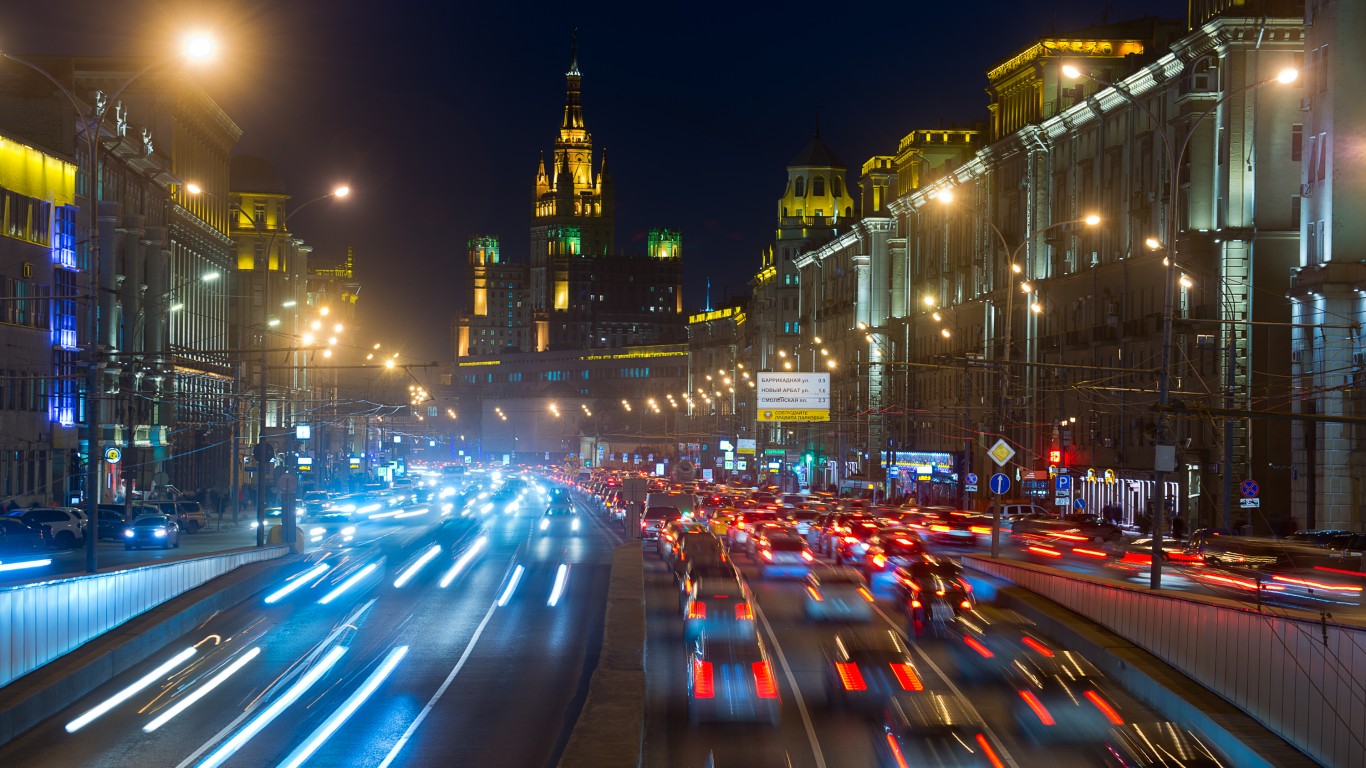
If Russia were to westernize and reform to the point of being accepted to NATO, it would also likely be able to join the European Union and other beneficial trade agreements. It would turn into a stable and lucrative location for overseas investment, especially with its vast untapped stores of natural resources of all kinds. As climate change continues, the climate is likely to warm and reveal more of these, as well as giving Russia greater access to international trade through ice-free Arctic ports. With its vast oil reserves combined with those of the United States, the world would be much less dependent on Middle Eastern oil and could better sustain stable prices. Of course, this might prolong the world’s suicidal dependence on fossil fuels.
Non-NATO Countries

With such an overwhelming preponderance of the world’s military power, land area, and resources united under one super-alliance, and with its area of responsibility now stretching well beyond Europe across Asia, other friendly countries would likely want to join. It could start to transform into a truly global alliance, incorporating Japan, South Korea, Taiwan, the Philippines, Australia, New Zealand, and a number of Latin American countries.
NATO Rivals
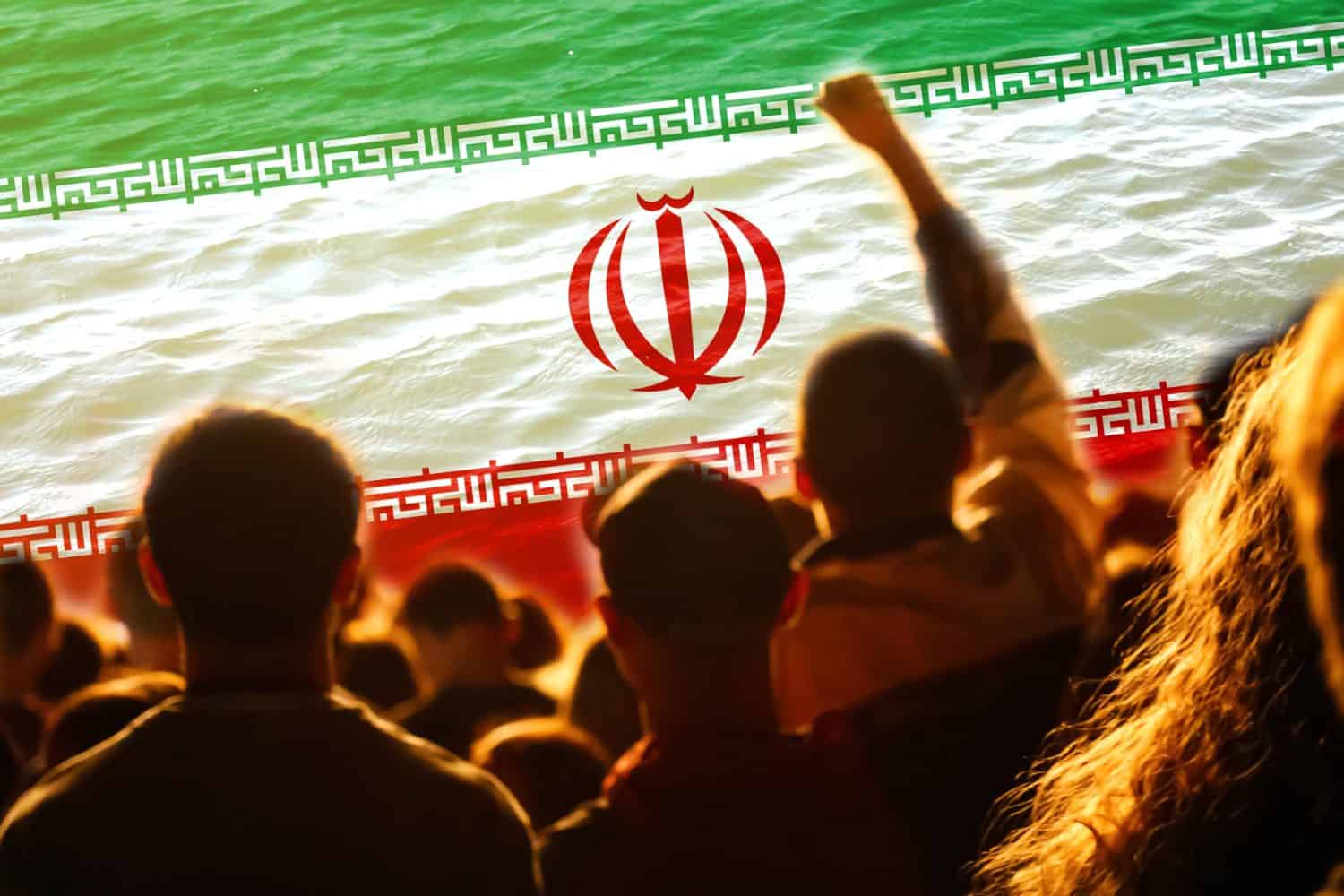
Significant NATO adversaries like Iran, China, and North Korea would feel significantly threatened and constrained in their movements. It is possible some, like North Korea, would strike out suicidally if they thought their regime was going to fall anyway. But more likely, prudent countries would see the handwriting on the wall and try to cut the best deals they could with NATO to avoid direct military conflict with them.
As long as those countries stayed within their borders and did not egregiously abuse human rights, the alliance would likely leave them to run their course and fall apart from internal forces. Otherwise, sanctions, blockades, covert operations, and even military strikes could be on the table to put more cooperative regimes in place.
Decisive Conflict Resolution

Super-NATO could decide to put a decisive end to some of the world’s most pernicious conflicts, by force if necessary. The Middle East conflict might be solved with global cooperation on a strategy to stop arms sales to the region and implement economic embargoes and even military action as necessary. This could be followed up with UN and/or NATO peacekeepers and generous economic assistance to rebuild the region from decades of conflict. All of this would be much easier to achieve without Russia and NATO arming opposite sides of the conflict.
How Likely Are These Scenarios?
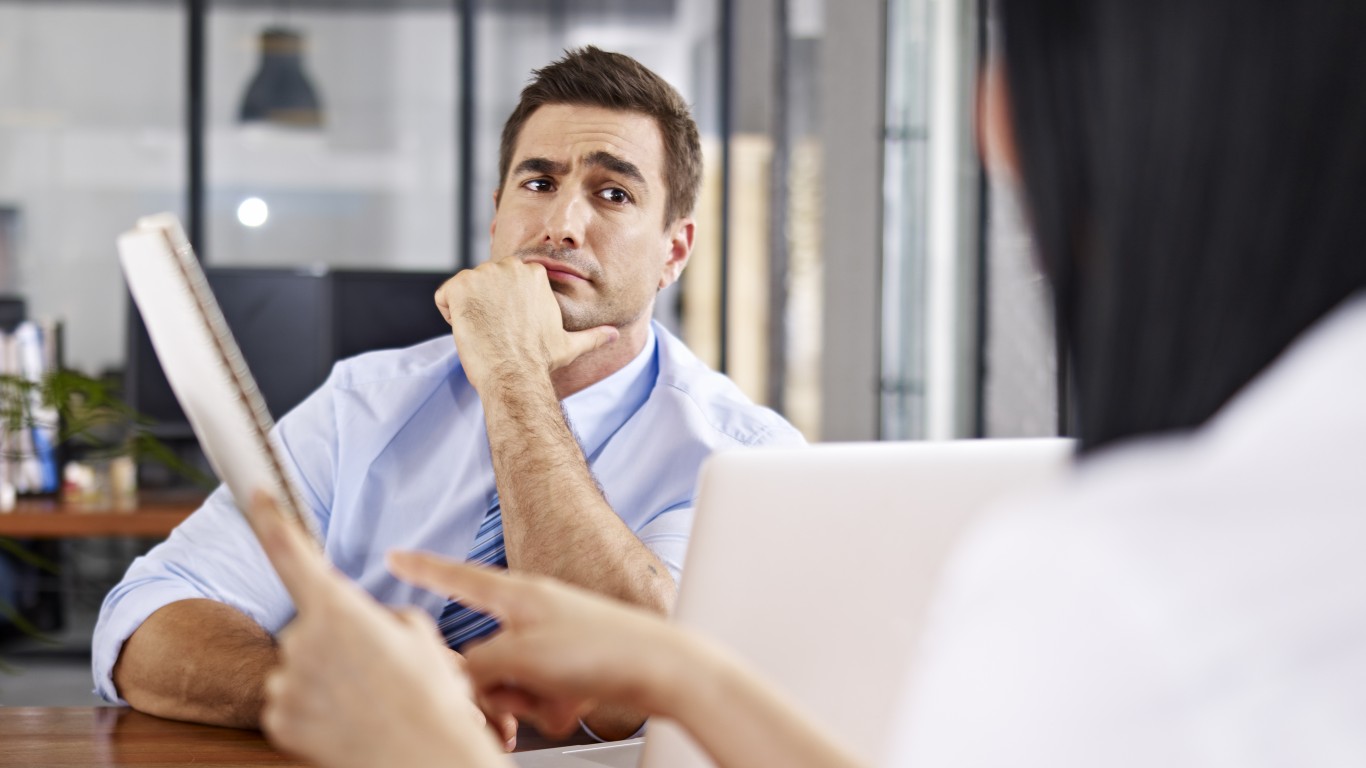
Make no mistake. This is all fantasy. It’s not likely under any circumstance that Russia will be allowed to join NATO. The history of animosity and the very purpose of the organization would suggest that Russia would have to go through substantial reforms and prove itself to be truly a new, friendly country for a very long time before such an idea could be the remotest possibility.
Why did we go through all this then? Because it whets our appetite for how finding common ground with Russia, even outside of a formal alliance, could be transformative for our nations and the world as a whole. But only if it is done in a way that does not involve NATO sacrificing its fundamental values that it has successfully defended for 75 years.
Get Ready To Retire (Sponsored)
Start by taking a quick retirement quiz from SmartAsset that will match you with up to 3 financial advisors that serve your area and beyond in 5 minutes, or less.
Each advisor has been vetted by SmartAsset and is held to a fiduciary standard to act in your best interests.
Here’s how it works:
1. Answer SmartAsset advisor match quiz
2. Review your pre-screened matches at your leisure. Check out the advisors’ profiles.
3. Speak with advisors at no cost to you. Have an introductory call on the phone or introduction in person and choose whom to work with in the future
Thank you for reading! Have some feedback for us?
Contact the 24/7 Wall St. editorial team.
